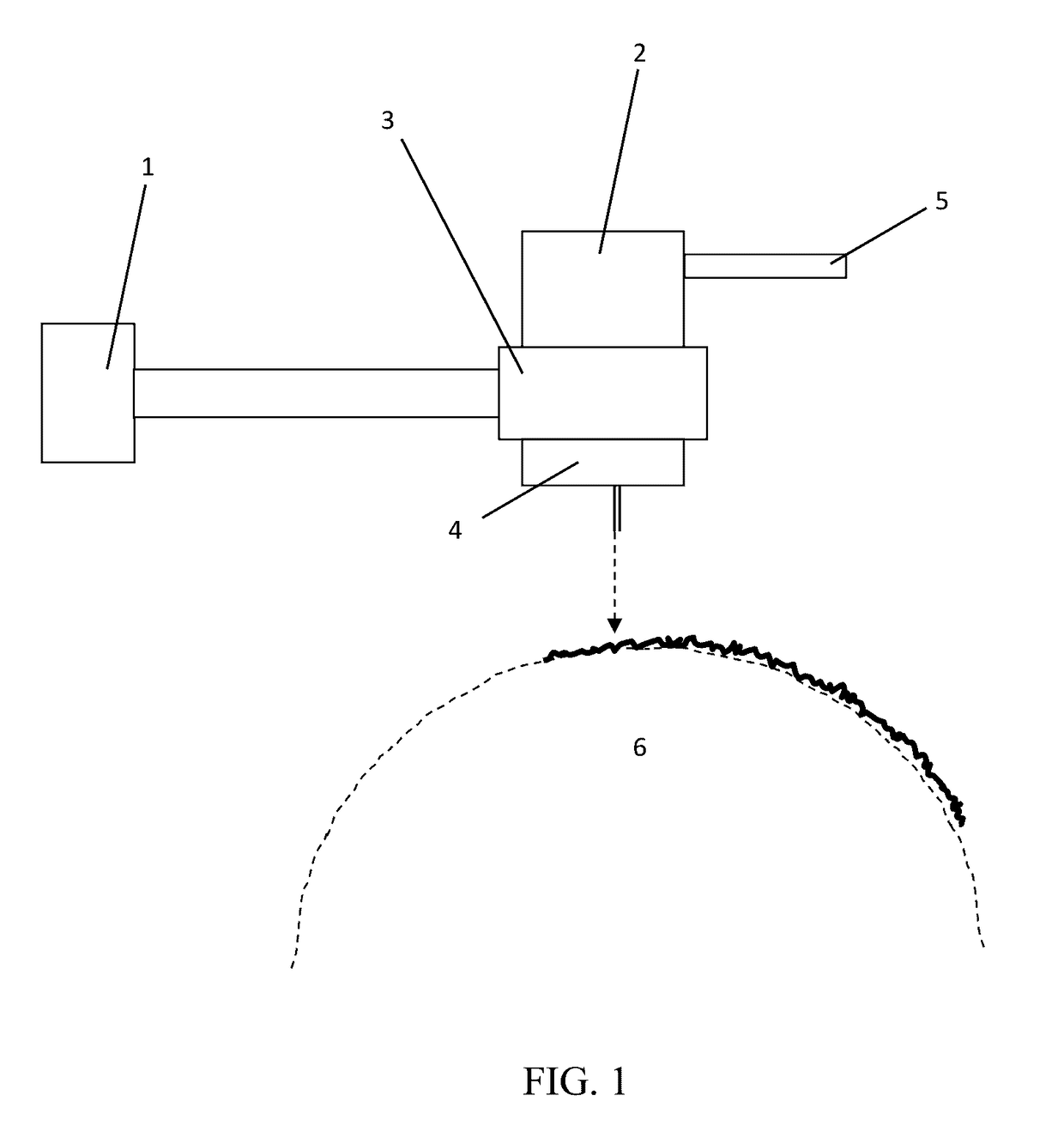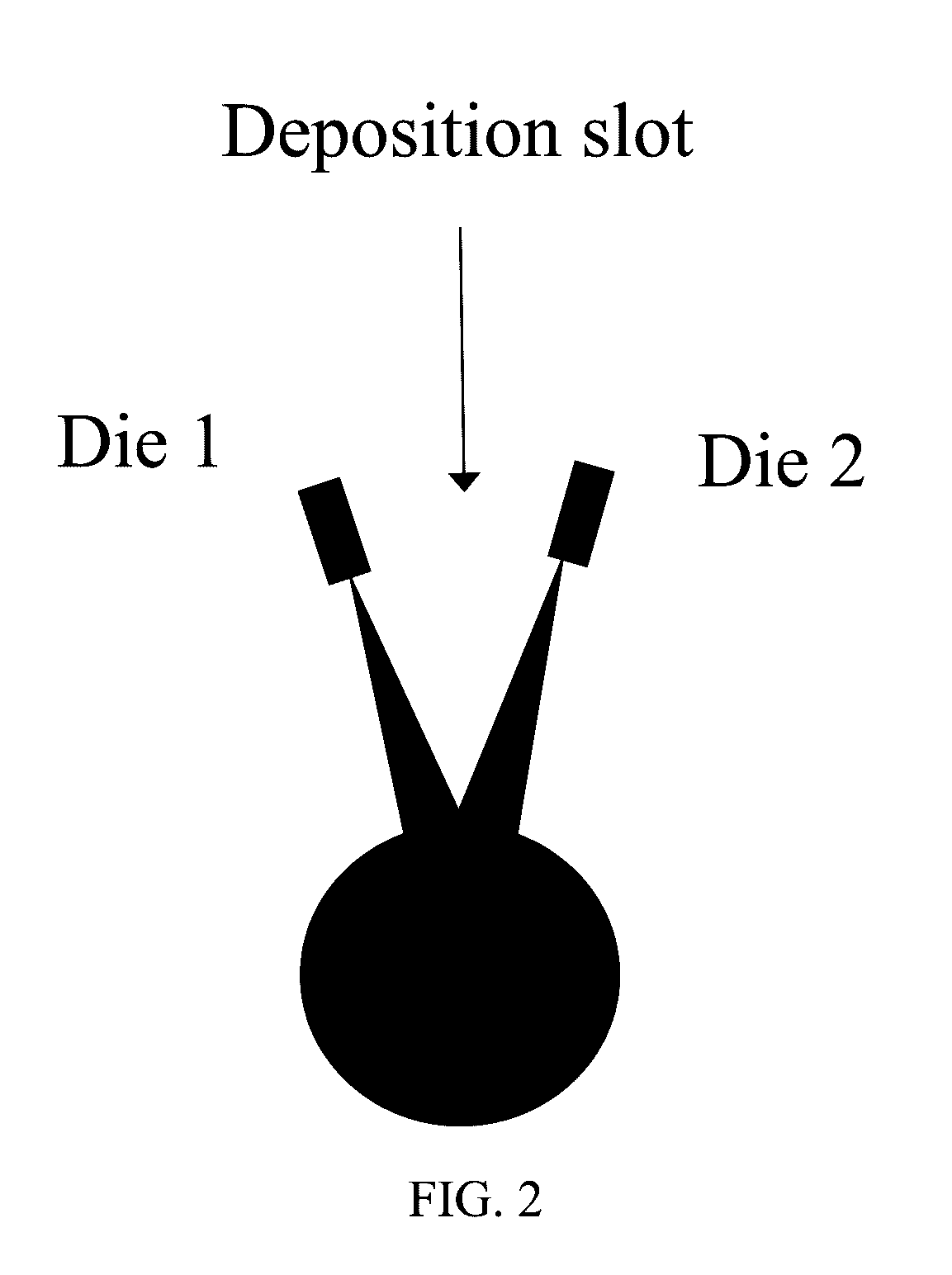Multi-die melt blowing system for forming co-mingled structures and method thereof
- Summary
- Abstract
- Description
- Claims
- Application Information
AI Technical Summary
Benefits of technology
Problems solved by technology
Method used
Image
Examples
example 1
[0101]Co-mingled fine and coarse fibers can be formed by having two or more dies that have capillaries that are different in size. Alternatively, two or more similar or dissimilar dies can be used but the capillary throughput is adjusted such that fine and coarse fibers are formed. In a preferred embodiment, two different die types are used—one based on a concentric air design and the other based on single-row-drilled-hole type die design.
example 2
[0102]Co-mingled meltblown and electrospun webs can be formed by having two or more meltblown dies and a stream of electrospun fibers that are injecting the electrospun fiber webs into the meltblown fiber streams. The drum collector acts as the ground for the Electrospinning system. The advantage of such a system is that it can form a larger fiber layer (for pleating / molding) and also for pre-filtering using a concentric air-type die and a polymer such as PET, PBT and the like, and a layer of electrospun fibers that are deposited into the middle of the of the two converging meltblown fiber streams. As such, a third layer of fibers can be inserted between and / or at least partially co-mingled with layers of fine fiber.
example 3
[0103]Co-mingled cut fibers and meltblown fibers can be formed by having two or more meltblowing dies and depositing cut fibers in the form of loose fibers and / or staple fiber webs by depositing fibers and / or the web into the converging stream of meltblown fibers. The fibers are deposited by using a similar technique to depositing particles in powder coating units where they are dosed and added using a rotating brush or collector.
PUM
| Property | Measurement | Unit |
|---|---|---|
| Length | aaaaa | aaaaa |
| Length | aaaaa | aaaaa |
| Length | aaaaa | aaaaa |
Abstract
Description
Claims
Application Information
 Login to View More
Login to View More - R&D
- Intellectual Property
- Life Sciences
- Materials
- Tech Scout
- Unparalleled Data Quality
- Higher Quality Content
- 60% Fewer Hallucinations
Browse by: Latest US Patents, China's latest patents, Technical Efficacy Thesaurus, Application Domain, Technology Topic, Popular Technical Reports.
© 2025 PatSnap. All rights reserved.Legal|Privacy policy|Modern Slavery Act Transparency Statement|Sitemap|About US| Contact US: help@patsnap.com



